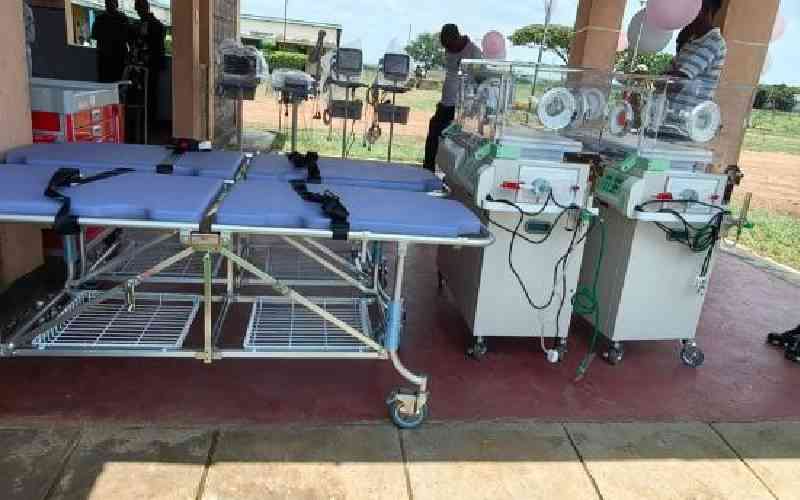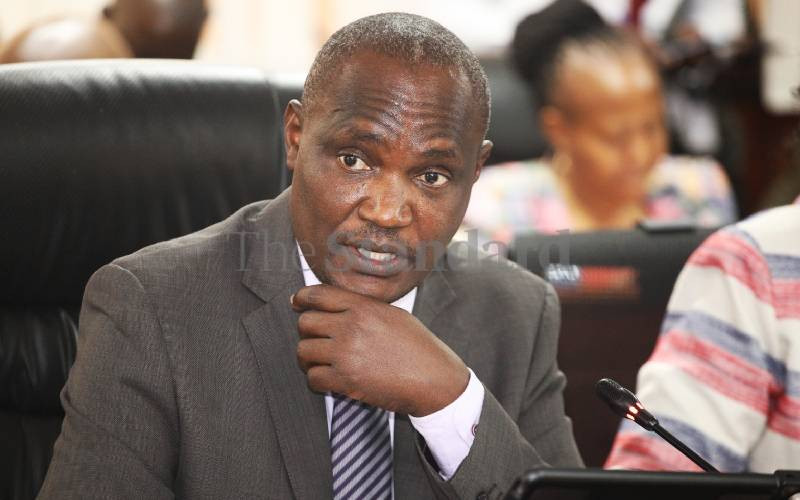Lilian Onyango tells you how training on child resuscitation could help in lowering child morbidity
It is heart breaking to watch a child arrive in hospital alive and then watch them die.
This is even more depressing when there exists a possibility that the child may have survived had they been resuscitated.
Resuscitation is the act of reviving a person and returning them to consciousness.
Unfortunately, many health workers are not equipped with the basic neonatal resuscitation skills although this situation is slowly changing.
But the need for initial and continued neonatal resuscitation training among Kenyan health workers in order to be able to save lives is even more pressing as 2015, the time set for attainment of Millennium Development Goals (MDGs), draws nearer.
The MDG four seeks to reduce the rates of morbidity and mortality in children. As of last year, the under-five years child mortality rate was 74 per 1,000. Most of these children die before they are one-year-old. And of these, 62 per cent die within the first month after birth.
To improve child survival rates simply means ensuring that all the necessary health care procedures that can be accorded to save a life are available. It means giving training to all the relevant persons who handle children right from the guardian at home to the caregiver in hospital.
Guardians need to be equipped with basic first aid skills to ensure that in case of a medical emergency, they know what help to accord a child.
At the same time, health workers need to be trained on various resuscitation skills in order to be able to save a life.
Unlike adults, a child is delicate and a delay in giving them the required treatment may mean death.
On the other hand, if resuscitation is not done properly, you may end up with a cabbage.
This means that resuscitation must be done in a timely and proper manner so that the outcome is positive.
One of the major problems the country has been facing is lack of specialists trained in paediatric care.
This was largely due to the fact that people had to travel abroad to receive training on paediatric nursing.
Stay informed. Subscribe to our newsletter
At Gertrude, the training of paedetric nursing began in 2005. Since then, many health professionals working both in private and public health facilities have been trained.
This has helped the country deal with issues of morbidity and mortality and it is one of the reasons that saw Gertrude receive the WHO award last year for improving the care of children.
However, we still have a big problem in our hands and that is paediatric HIV and Aids, which has contributed towards the high paediatric mortality rate.
The biggest obstacle in the fight against low child mortality rate has been HIV and Aids. Especially because it brings about many health-related complications.
Unfortunately, the HIV training that many health workers have received has mostly centered on adults with children being ignored.
However, two years ago, Gertrude partnered with the Regional Aids Training Network (RATN) to provide health workers with refresher HIV courses.
Through RATN sponsorship, health workers were taught basic paediatric HIV knowledge and skills in regards to paediatrics, which have impacted the delivery of services especially at the Comprehensive Care Centre.
The health workers were taught on communication skills so that they could be able to give information to the guardians on how to better care for children with HIV and Aids.
There has also been training of trainers (TOT), which have targeted health workers in senior positions.
These courses have been geared towards enabling the health workers to better manage paediatric HIV.
Therefore, training is key if the country is to move forward in combating the high levels of paediatric morbidity and mortality.
 The Standard Group Plc is a
multi-media organization with investments in media platforms spanning newspaper
print operations, television, radio broadcasting, digital and online services. The
Standard Group is recognized as a leading multi-media house in Kenya with a key
influence in matters of national and international interest.
The Standard Group Plc is a
multi-media organization with investments in media platforms spanning newspaper
print operations, television, radio broadcasting, digital and online services. The
Standard Group is recognized as a leading multi-media house in Kenya with a key
influence in matters of national and international interest.
 The Standard Group Plc is a
multi-media organization with investments in media platforms spanning newspaper
print operations, television, radio broadcasting, digital and online services. The
Standard Group is recognized as a leading multi-media house in Kenya with a key
influence in matters of national and international interest.
The Standard Group Plc is a
multi-media organization with investments in media platforms spanning newspaper
print operations, television, radio broadcasting, digital and online services. The
Standard Group is recognized as a leading multi-media house in Kenya with a key
influence in matters of national and international interest.








